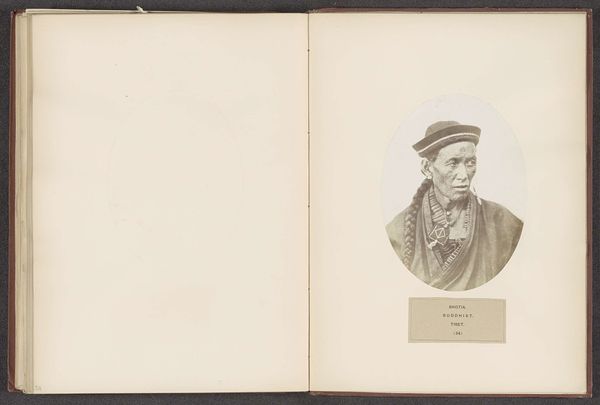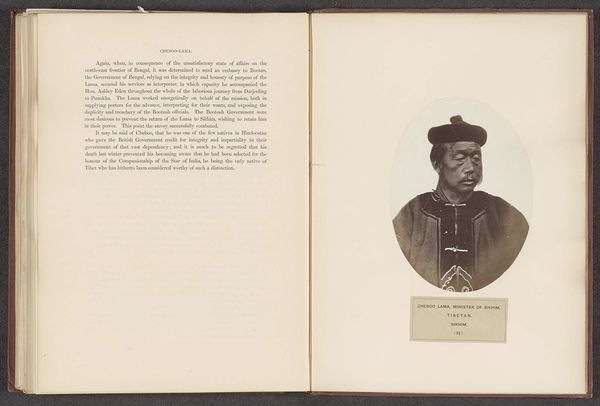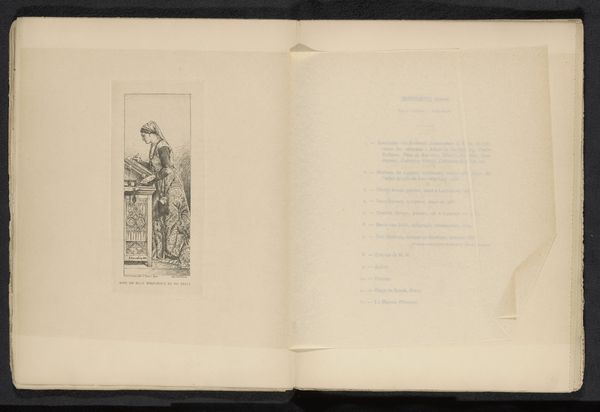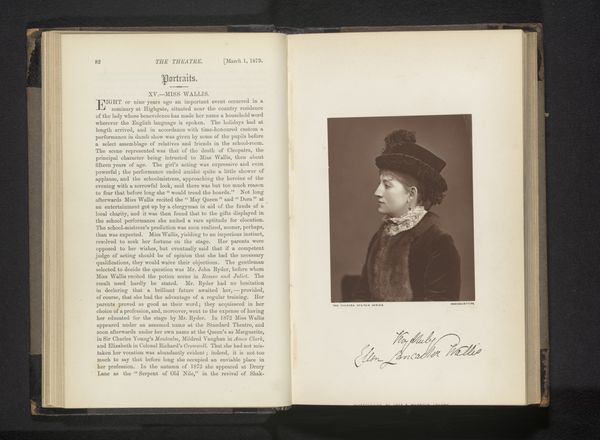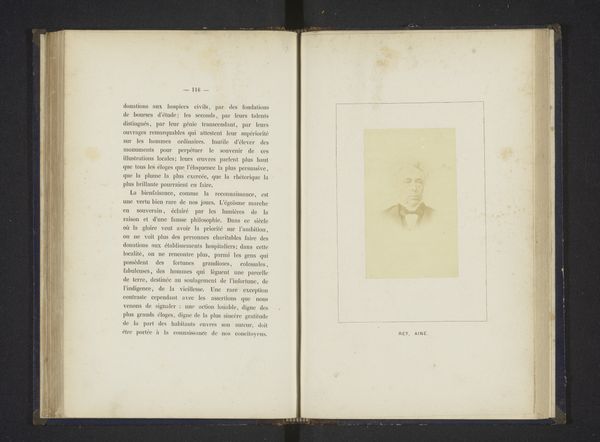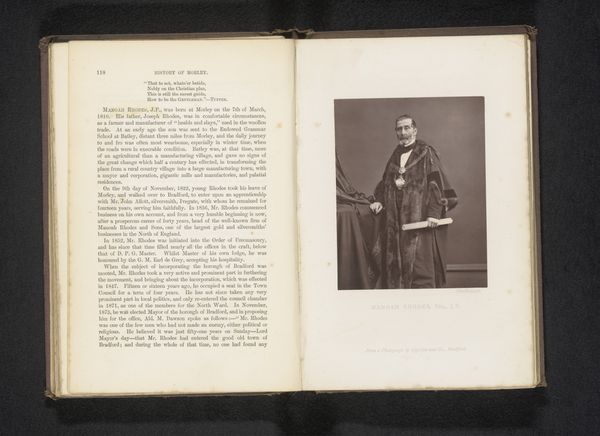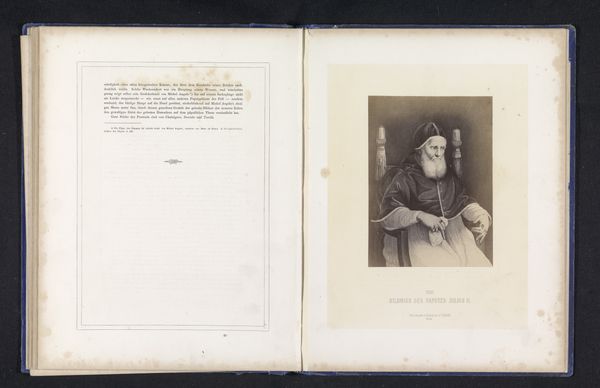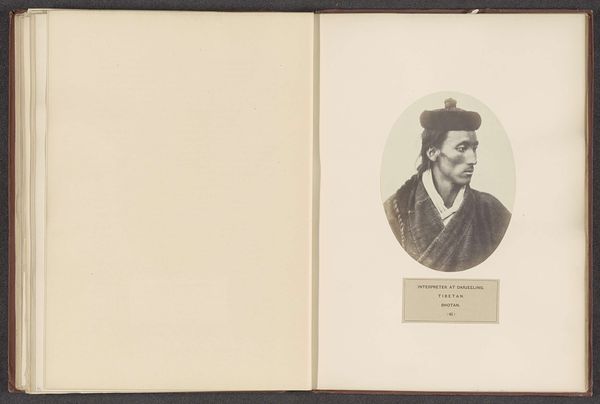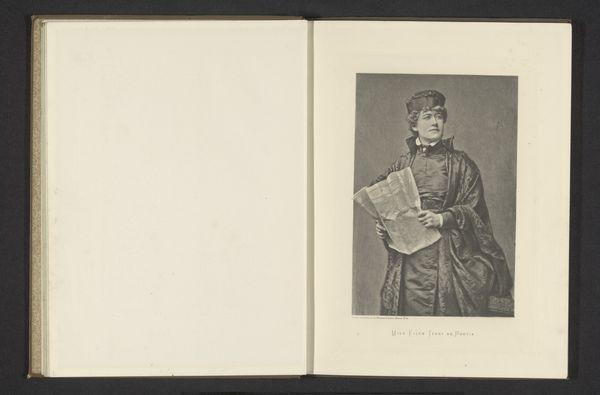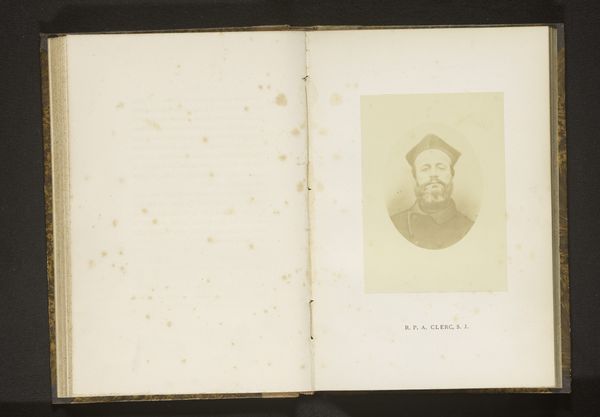
Fotoreproductie van een tekening, voorstellende een portret van koning Karel VIII van Frankrijk before 1890
0:00
0:00
drawing, paper
#
portrait
#
drawing
#
paper
#
11_renaissance
#
history-painting
Dimensions: height 126 mm, width 86 mm
Copyright: Rijks Museum: Open Domain
Curator: Here we have a photographic reproduction of a drawing, dating from before 1890. It depicts a portrait of King Charles VIII of France. Editor: It’s striking. He’s almost doll-like, posed in such a stiff, formal way, it lends a real sense of coldness. There is an almost arrogant tilt to his head. Curator: Precisely. Note the sharp lines, the carefully etched details of his clothing. The artist has emphasized the contours of his face, particularly around the eyes and jawline, to create a sense of aristocratic intensity. Consider also the economy of line and form; there is nothing superfluous here. It presents an uncluttered image, drawing us immediately to the figure. Editor: It speaks volumes about the representation of power. It’s an incredibly stylized, almost performative masculinity. It asks what norms are we conforming to here? And whose gaze is doing the looking? Charles is presented as an immovable force, removed and unreachable behind both wealth and masculinity. I do feel the artistic focus has been aimed more at his station than his identity, perhaps. Curator: It is not identity so much as bearing being communicated; he occupies space as an agent. What matters here is Charles VIII in relation to the state, as an historical figure. A vital observation is how the rendering does this formally through pose and expression; this is portraiture being presented to us from an ideological point-of-view through composition, contour, and form. The texture and lighting also have a hand in this formalistic depiction of King Charles VIII. Editor: I’m not sure I agree on how it completely neglects identity in this formal presentation of power. His face tells a different story, the expression in his eyes reveals inner turmoil. I wonder what kind of commentary that speaks on a man who did as he wished? Curator: I see this piece as a powerful examination of form, and what form alone can deliver: presence and, ultimately, meaning. Editor: Whereas for me, the way meaning is formed depends on its contextual relevance and can make a significant impact on broader dialogues and social causes.
Comments
No comments
Be the first to comment and join the conversation on the ultimate creative platform.
